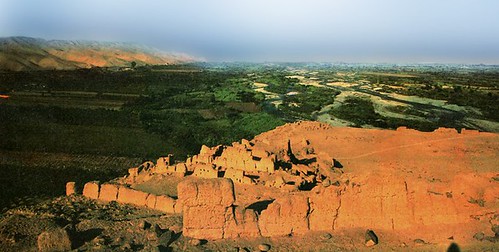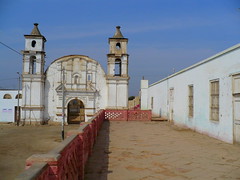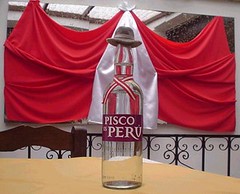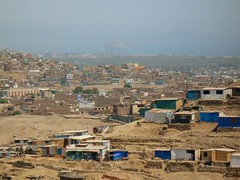Klaus Koschmieder – Latest Chachapoyan Discoveries
German archaeologist and explorer Klaus Koschmieder has made a huge number of discoveries relating to the Chachapoyan civilisation, single-handedly writing the book on the builders of the lost cities of Kuélap and Gran Pajaten, as well as the fascinating cliff-top sarcophagi. Despite his great finds, his work goes mostly unnoticed, the great Chachapoya civilisation, rivals of the Incas, is little-known outside Peru. Still, Klaus forges ahead, uncovering more and more about the culture and discovering new sites, such as the sacred cave of Corralpampa.

The terrain is exceptionally rough. Huge cliffs ascend into the clouds above the river Utcubamba. There are no paths to follow and no people to cut them, at least for the last 500 years. The rugged terrain is covered in greenery and looks pleasant at first sight. And it is until you try to traverse it.
Thick spiny plants cover everything, shredding even the most hardened legs. A slip and fall could mean death, and sometimes the only way forward is up a vertical cliff with some rope.
“Normally we walk every day from 7 in the morning until 4 in the afternoon, through cliff-side forests that would scare anyone. Once I fell ten metres down, but luckily I was stopped from falling more by a large rock and only had gashes in my arms and legs”, Klaus tells.
Others in his team weren’t so lucky. A fellow German suffered 400 bee stings, near fatal, and had to spend time in a hospital in the nearby city of Chachapoyas. Another problem that has afflicted many are the fleas and ticks that live in the caves. After many episodes of searing torture they have taken to fumigating the caves used by the Chachapoya as tombs and ceremonial places before studying them. This is without mentioning the torrential rains, poisonous plants, tarantulas and other poisonous insects as well as regular rock falls and land slides. Luckily, their sacrifices bore fruits.
Klaus
Find out more about Klaus, his history and his previous discoveries in the Chachapoyas area here.
Klaus has worked on various archaeological sites in Peru since 1988, sites such as Sipán, Túcume and in the Bosque de Pomac alongside none other than Izumi Shimada. A project of exploration in the Casma valley formed the basis for his masters thesis, later directing a Chimú dig in Casma to earn his doctorate. But it wasn’t until he dedicated himself to Chachapoyas that he started making a name for himself, with help from German grants, and despite hindrance from Peruvian idiocrats.
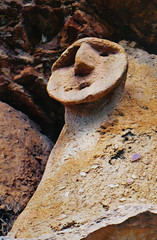 Since arriving in Chachapoyas Klaus has found and registered 300 sites, among them ancient rock art, terrace farms, pre-Hispanic paths, ruins of villages with circular homes and a large selection of tomb sites including caves, chullpas and sarcophagi. It is these sarcophagi that most people want to know more about as they are unique to the region. Despite their beauty, Klaus’s investigations have concluded that they are not special, in fact quite the opposite. They were quite common and among the simplest and easiest way the Chachapoyas had to bury people. The only ones that really belong to elite members of the civilisation are those found at Karajía, huge anthropomorphic examples. The majority though belong to commoners, completely reversing the accepted ideas that existed before Klaus came along.
Since arriving in Chachapoyas Klaus has found and registered 300 sites, among them ancient rock art, terrace farms, pre-Hispanic paths, ruins of villages with circular homes and a large selection of tomb sites including caves, chullpas and sarcophagi. It is these sarcophagi that most people want to know more about as they are unique to the region. Despite their beauty, Klaus’s investigations have concluded that they are not special, in fact quite the opposite. They were quite common and among the simplest and easiest way the Chachapoyas had to bury people. The only ones that really belong to elite members of the civilisation are those found at Karajía, huge anthropomorphic examples. The majority though belong to commoners, completely reversing the accepted ideas that existed before Klaus came along.

Getting to Corralpampa
Journalist Álvaro Rocha and photographer Michell León made the treacherous journey with Klaus.
Leaving Chachapoyas early in the morning it hadn’t yet got into our heads that we’d embarking on a long and jagged hike along impossible trails. Michell later confessed it was the most difficult hike of his life.
In Lámud, an hour from Chachapoyas, we met up with the rest of the group that was going to the Corralpampa cave. These were INC official Manuel Malaver, part of the government office here to oversee the extraction of material from the archaeological site, as well as Klaus and two companions, Juan Gupioc and Claimer Fernández whose job it was to safely transport the artefacts back over the difficult terrain.
We left Lámud in good spirits heading towards Juanita Pampa, where our car couldn’t make it any further after getting stuck in the mud. So from here we took off on a path that looked like it was well-trodden and was only at times blocked by shrubbery. We had before us an unforgettable view of colossal waterfalls tumbling down green mountains that lined the river Utcubamba, among them the spectacular falls of Gocta.
We soon arrived to level ground, an idyllic plain bristling with tall grasses and with the ruins of a circular building erected by the Chachapoyas, as well as a standing stone laid flat with cavities carved to capture water and reflect the stars for astronomical observation.
But these feelings of joy soon faded away as the task ahead of us grew more difficult. All signs of the path had disappeared, but not only this, the only way ahead was over chasms and up cliff faces with nothing but a rope to keep us from falling, all of these by the way infested with spiny vegetation, loose stones and biting mosquitoes. We were all heavily bruised by boulders to the ribs, had bloodied lips and bloodied arms and legs before we reach the cave, a cave that was merely a scar in this jagged landscape.
We entered the cave, pleased to escape the midday sun. I almost couldn’t stand. We had to be mindful of the stalactites on the roof of the cave and the water dropping from them, the Chachapoyan ceramics were on the other hand completely unharmed.
The Find
It is in this cave, one of many discovered by Klaus, that a beautifully preserved collection of Chachapoyan ceramics were discovered, some twenty or so items. They were produced some time between 1200 and 1500 A.D.

“Many of the decorated bowls have three legs, they are on tripods, there are pitchers too and other ceramics with other functions. We didn’t find any human bone fragments, only animal bones. In the higher part of the cave there are offerings of maize and beans, which reinforces the sacred characteristic of the cave”, Klaus explains.
 What most impressed Klaus were the other rock shelters, differing from the caves because they allowed the light to reach all the way inside. Here were buried the higher ranking Chachapoyas, something that is quite clear from the quality of offerings.
What most impressed Klaus were the other rock shelters, differing from the caves because they allowed the light to reach all the way inside. Here were buried the higher ranking Chachapoyas, something that is quite clear from the quality of offerings.
“We have evidence of up to three warriors that display a large number of fractures, especially in the skull, some with holes cut into them, and there is a direct relationship between these and the wall paintings, which show trophy heads. This is obvious. Above the tombs there are always these representations, for example, a man who holes a knife in one hand and a head in another”.
Getting back
The return to Juanita Pampa, our starting point and where our car has been waiting for 8 hours, was an heroic act, especially for those most affected by injuries. We were no longer humans but worms pressed to the ground, trying to move forward, wrapping ourselves around plants and trunks that weren’t at all trustworthy. The mountain was trying to push us off into the abyss formed by the Utcubamba, as if it wanted to leave us as human sacrifice, a payment in return for sharing in its secrets.
Our suffering seemed to fade momentarally when we finally reached the plain we had been in that morning with a path in fairly good condition to take us the rest of the way. Smiles of relief had worked their way onto our faces, the worst was over. That was until Klaus screamed at us “BEES! RUN!!”. The fun had ended as we clambered forward as fast as we could, remembering the German companion of Klaus who barely survived her encounter with local bees.
There was still two hours of climbing ahead of us to reach the car, I was in a bad way, I was slow but didn’t stop. Michell was having a worse time of it, he was on the edge of collapsing. We both fell to the floor, rocks as our pillows.
Thankfully, they did somehow make it back to Lámud to tell their tale and share their photos.
Funding
 Financing for Klaus’s expeditions ran out this past February, but he has stayed longer to complete the processes for the National Institute of Culture (INC): reports, inventories and other documentation. He also has to submit a report to the German entity that funded the project.
Financing for Klaus’s expeditions ran out this past February, but he has stayed longer to complete the processes for the National Institute of Culture (INC): reports, inventories and other documentation. He also has to submit a report to the German entity that funded the project.
Klaus would like to continue his work in Lámud, but money from Germany has dried up and they don’t usually provide grants to people 50 years old like Klaus, so he is looking for help wherever he can find it. It wouldn’t be a bad idea for the Peruvian government to come up with the funds, after all it is an inexpensive project that has had great returns in only a very short time.
Tags: chachapoyas, corralpampa, gocta, Klaus Koschmieder, lamud, tombs, utcubamba






